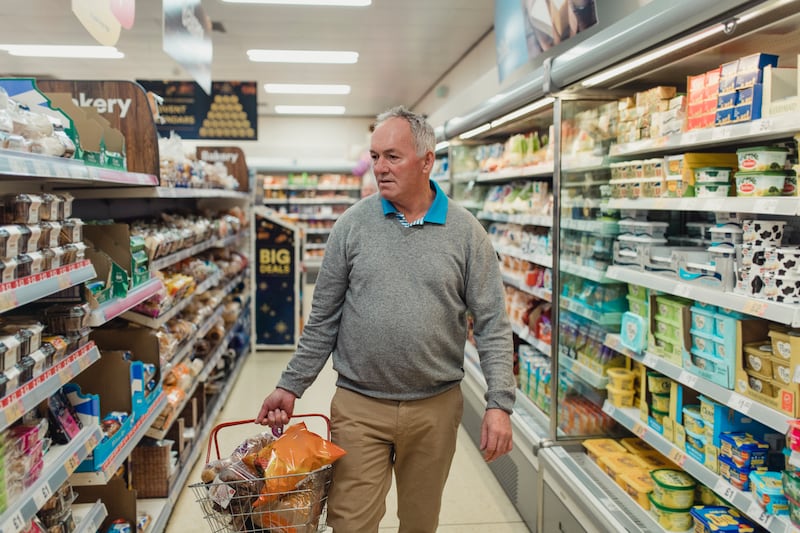Shop price inflation has eased to its lowest rate since December 2021, driven by falling food costs and competition between retailers, according to the latest British Retail Consortium (BRC)-NielsenIQ Shop Price Index.
It said that food prices overall were 3.7% higher than a year ago, down from 5% in February, the 10th consecutive month of slowing inflation for the category and its lowest since April 2022.
And separate data in Ireland from Kantar shows that grocery inflation in the north stood at 11.6% in March, the sixth consecutive month of decline, and bringing the rate back to a level last seen in March 2023.
Kantar - which every month updates the market share of the leading supermarkets in the north - says that in the year to St Patrick’s Day, some £4.24 billion passed through tills.
That’s a 10.9% year-on-year increase, which amounts to shoppers spending an additional £417 million compared to last year.
The average household in Northern Ireland spent £5,598, reflecting a £534 increase compared to the previous year.
Shoppers made an average of six additional trips to stores compared to last year, but the number of packs continued to decline by 0.2% year-on-year.

Kantar’s business development director Emer Healy said: “Although grocery inflation levels are falling, they are still exceptionally high, and consumers in Northern Ireland are still facing significant pressures on their household budgets, making the landscape as competitive as ever.
“Retailers are putting emphasis on own-label lines and promotions to attract shoppers through the door. Indeed nearly 22% of sales were made through a promotional offer, a level this high has not been seen since October 2020.
“Alongside promotions, retailers are also emphasizing own-label lines to attract shoppers.
“Own-label remains popular as consumers tighten their purse strings, growing by 13.1% year-on-year, with shoppers spending an additional £215 million on these ranges compared to last year.
- Grocery price inflation drops to new two-year lowOpens in new window
- Grocery bills 'will rise by £553 if shoppers don’t change their habits' says KantarOpens in new window
- 'Turkey a turn-off on Christmas tables' says KantarOpens in new window
- Spending at NI supermarkets increased by hundreds of millions in 12 months of lockdown - KantarOpens in new window
“Brands grew slightly behind the market at 10% year-on-year and hold a 54.3% share of the value market.”
The Kantar data reveals that an additional £4.5m was spent on chocolate eggs versus last year, with over 53% of households in the north purchasing Easter eggs over the last 12 weeks.
On supermarket share, the overall positions remain largely unchanged, with Tesco leading the way (35% market share) followed by Sainsbury’s (16.9%), Adsa (16%) and Lidl (9.2%), while the symbol stores command a 6.2% slice of the pie.







